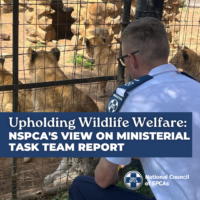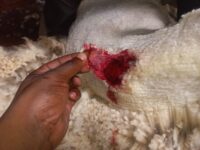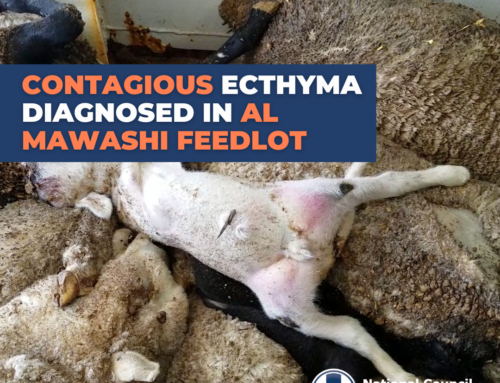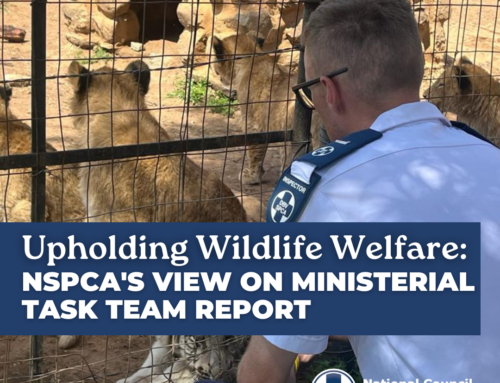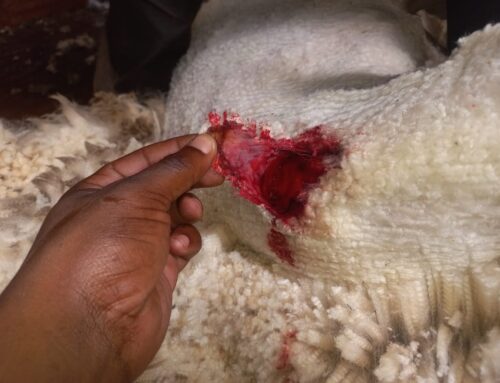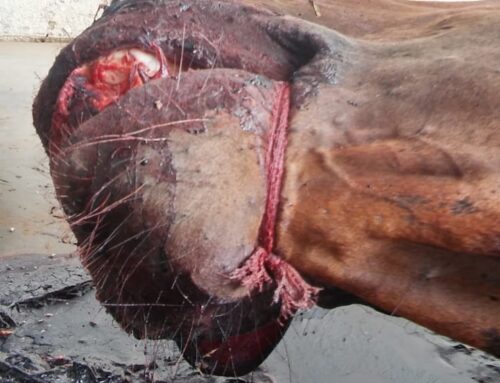Sickening Sights – Facebook and Internet
What can be done?
The National Council of SPCAs is often called upon “to do something about” a photograph or video footage circulating by email, on a web site or placed on Facebook. There is understandably outrage at what is depicted.
“Please resist the urge to pass it on and share,” is the message from the NSPCA. This often leads to other people becoming distressed but may be counter-productive in that the visual or footage could be removed before it has been traced.
When reporting matters of this kind, it is important to do so directly.
One issue that needs to be clarified at the outset is whether the images are genuine or simulated (computer generated or technologically changed). It is a sad fact that many images – disturbing as they are – cannot be banned or removed. The United States Supreme Court ruling in 2002 is significant. Simulated pictures of a crime, including those of child pornography, cannot be banned. Actual photographs can be banned because to produce them, a crime must have been committed. But to produce simulated, computer generated “photographs”, no actual crime need be committed. This includes the depiction of animal cruelty.
It is heartening to note that in South Africa, there is recourse as far as the depiction of animal abuse, cruelty to animals or violations of the Animals Protection Act are concerned, at least in terms of advertisements. Several years ago, the NSPCA complained to the Advertising Standards Authority (ASA) about a commercial for RADIO SONDER GRENSE which, according to the NSPCA depicted violations of the Animals Protection Act. They weren’t real sheep. They were dummies or puppets.
The ASA ruled in favour of the NSPCA and instructed that the offending advertisement be withdrawn in its existing format, stating that even though no animal was actually harmed during the making of the advertisement and imitation sheep were used, “To the viewer, perception is reality.” In a further landmark advertisement, the ASA ruled that a radio advertisement for COURTYARD HOTELS must be withdrawn even though there were no animals in the advertisement. It depicted cruelty through sound effects.
The issue is the depiction of animal cruelty, irrespective of whether cruelty takes place. The USA has a “Crush Act” which defined “the depiction of animal cruelty” as “Any visual or auditory depiction, including any photograph, motion-picture film, video recording, electronic image or sound recording of conduct in which a living animal is intentionally maimed, mutilated, tortured, wounded or killed, if such conduct is illegal under federal law or the law of the state in which the creation, sale or possession takes place, regardless of whether the maiming, mutilation or killing took place in the State.”
Now that’s interesting! It effectively means that people are prohibited from knowingly creating, selling or possessing depictions of animal cruelty with the intent to gain from them. Sadly, there’s the catch. Unless the materials are in your possession for commercial gain, you can’t be prosecuted. But it’s a good start.
An element that needs to be added to the argument here is that the filming of animal abuse and the possession of material depicting cruelty to animals isn’t restricted to people with ghoulish tendencies or malicious intent. SPCA personnel take visual evidence of incidents of abuse to use as proof in Court, to substantiate their case and to support their affidavits. It is powerful and admissible evidence. If being in possession of material depicting abuse and contraventions of the Animals Protection Act were offenses, then it examples of possession of this nature should be taken into account.
We come back to the issue of simulated cruelty, especially as it is extremely difficult even for experts to determine whether visuals are simulated or genuine photographs.
The advent of Internet and e-mail has served to make matters worse. We all know how quickly a message can be sent out to everyone in your computer’s mail box.
Can anything be done if you come across the depiction of cruelty to animals? Firstly, please report it. The NSPCA or your local SPCA may know about it but they also may not. Rather than venting your undoubted feelings of fury or outrage, try to save time by concentrating on detail: – when, where, what etc. The source needs to be investigated.
The public can also help enormously by supporting the efforts of the SPCA movement to minimise and hopefully eradicate the unacceptable treatment of animals as depicted in the media, especially on reality television programmes but also in serials. We recall a dog being kicked in an episode of an SABC “soapie” some years ago. This was pointed out as a violation of the Animals Protection Act and undesirable. When the matter hit the media, the NSPCA was ridiculed and not all members of the public supported our stance. But the acceptance of any depiction of cruelty even with the worn-out justification that it was “tongue-in-cheek” is a step towards accepting more serious depictions of animal abuse – or at least of setting precedents that by not objecting there is tacit acceptance.
Donate to the NSPCA
If you are as passionate about animals and their well-being as we are, consider supporting our causes by donating here.


